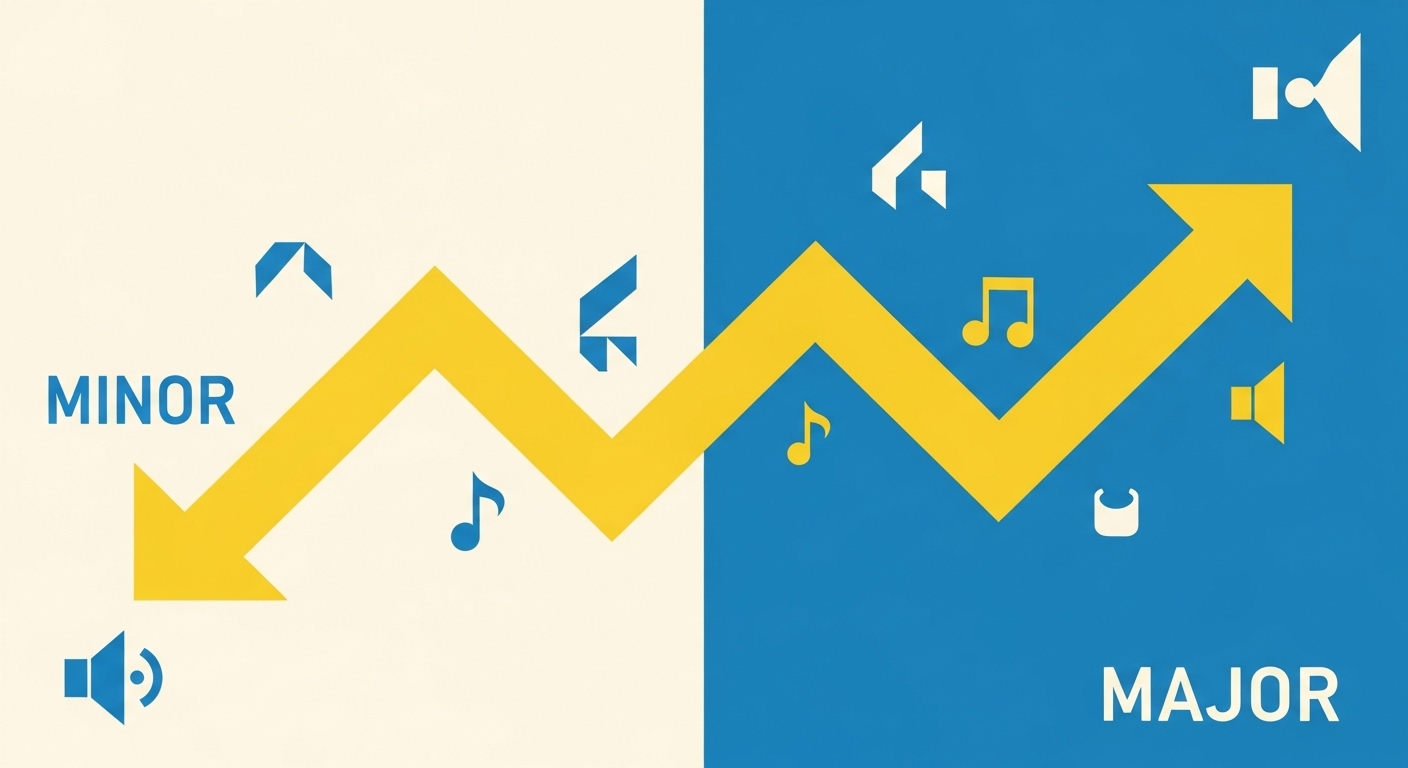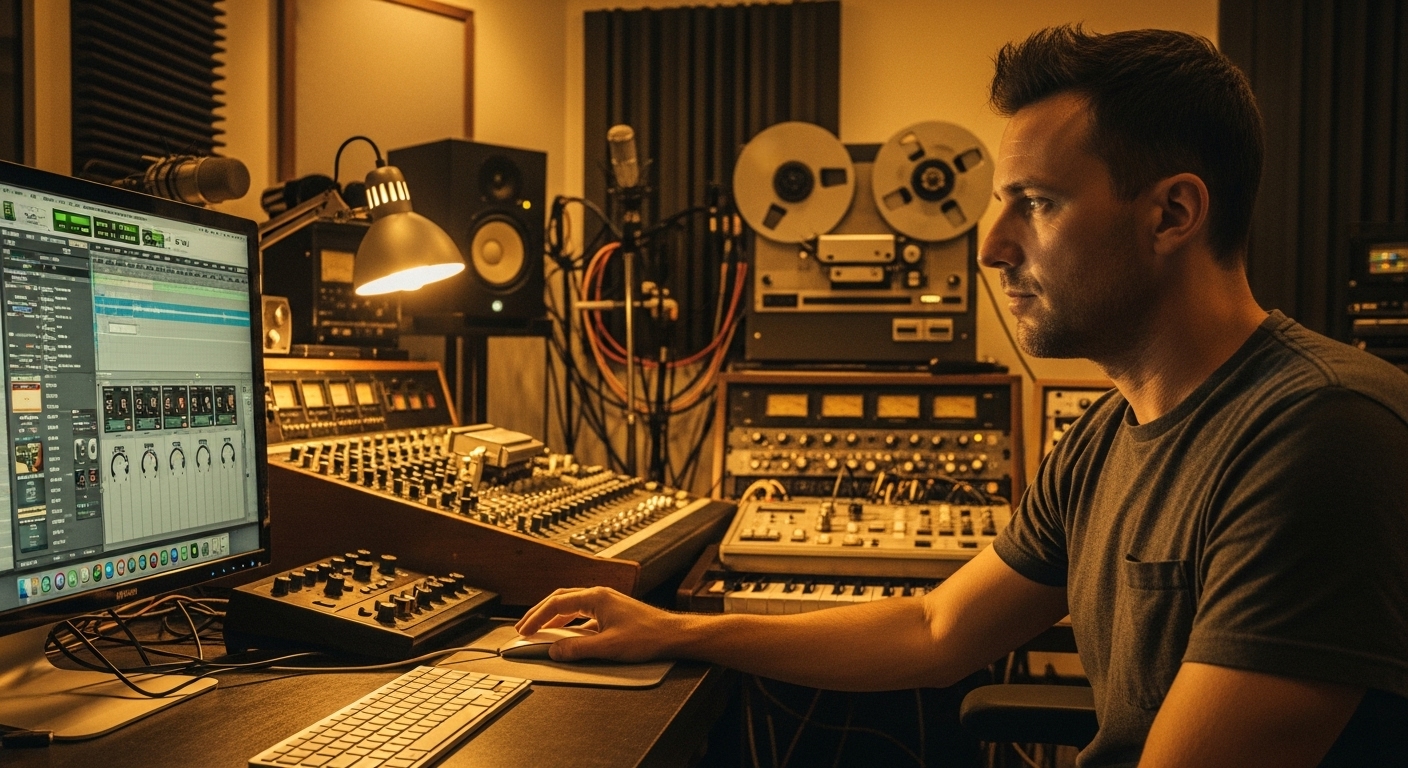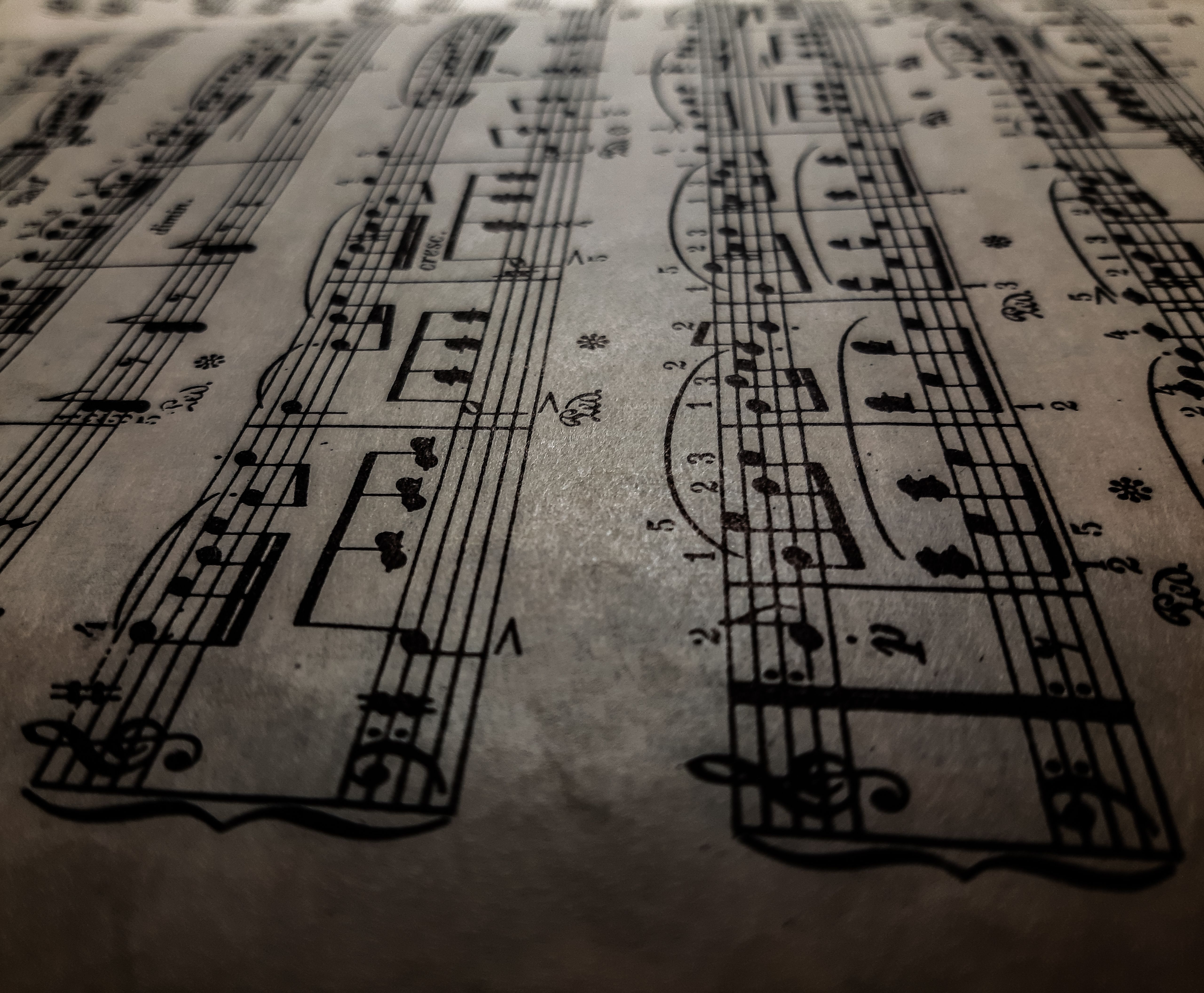From Gloom to Glory: Master the Minor-to-Major Songwriting Shift
Most songwriters miss how shifting from a minor verse to a major chorus instantly changes the mood of a track. You might have felt something was off in your compositions, even when your melodies sounded good. This classic songwriting trick creates emotional contrast that hooks listeners and lifts your chorus with real feeling. Keep reading to see how this simple switch sharpens your composition and boosts your creative flow. For more insights, check out this article.
Emotional Foundations in Songwriting
Moving from minor to major can redefine your song's emotional journey. Let's start with how minor keys set the scene.
Setting the Mood with Minor Keys
Minor keys instantly bring a reflective and moody atmosphere. In the realm of songwriting, this choice is powerful—it's like painting with shadows. When you start your verse in a minor key, you create a sense of introspection. Consequently, this emotional depth invites listeners to dive deeper into your song's narrative.
So why do minor keys evoke such feelings? The answer lies in their structure. Specifically, the intervals in minor scales naturally create tension. This tension, in turn, makes your audience feel more invested, thereby setting the stage for a compelling chorus. By holding back in the verse, you build anticipation for the major lift that's coming. Thus, this classic approach keeps listeners on their toes.
Transitioning with a Pivot Chord
The magic doesn't happen by accident. To move from minor to major seamlessly, you need a pivot chord. Think of this as your bridge—it's the chord that connects two worlds. Often, this is the dominant chord of your new key. Therefore, it prepares the ear for a shift, making the change feel natural.
Why use a pivot chord? It smooths the transition, ensuring the major section feels like a logical next step. Without it, the change might feel jarring. But with it, your song flows effortlessly. As you approach the chorus, the pivot chord hints at brighter horizons, thereby making the shift exciting.
Creating Uplift with Major Keys
When the major key hits, it's like sunshine after rain. Major keys bring a sense of resolution and hope. This contrast against the minor verse is what makes your chorus memorable. By moving to a major key, you consequently give your listeners a sense of triumph—it's the payoff they've been waiting for.
Incorporating major keys isn't just about lightening the mood; it's about providing balance. Major keys resolve the tension created by minor keys, thus offering emotional relief. This balance ensures your song resonates with your audience, making them want to listen again and again. Explore more about how major and minor scales affect us emotionally.
Mastering the Minor-to-Major Shift

Let's uncover the secrets of the minor-to-major shift. This technique can turn a good song into a great one.
Understanding Relative Keys
Relative keys share the same notes but start on different roots. For example, A minor and C major. Understanding this relationship is key to seamless transitions. When you switch between relative minor and major, you maintain a cohesive sound. This familiarity soothes the listener, making the transition feel smooth.
Why bother with relative keys? They offer a toolbox of options. By knowing their relationship, you can easily pivot between moods. Your song flows naturally, creating a more engaging experience. This knowledge empowers you to craft emotionally rich compositions without overcomplicating your process.
Crafting Effective Emotional Payoffs
Every song needs a payoff. The moment when everything clicks. By using the minor-to-major technique, you ensure your chorus delivers. The buildup from the verse makes the major chorus feel earned. This emotional payoff leaves listeners satisfied and wanting more.
How do you ensure this payoff? Focus on tension and release. The minor verse builds tension, while the major chorus offers release. This dynamic keeps your audience hooked. It's a tried-and-true method that has been used in countless hits. By mastering this technique, you create songs that resonate deeply.
Case Studies in Successful Songs
Let's look at some hits that masterfully use the minor-to-major shift. Take "Someone Like You" by Adele. The song begins in a minor key, creating an emotional depth. As it moves to the chorus, the switch to a major key provides a powerful release, leaving a lasting impact on listeners.
Another example is "Fix You" by Coldplay. The verse starts somberly in a minor key. As the chorus approaches, the transition to a major key uplifts the entire track. This shift creates a sense of hope and resolution, making it a fan favorite. These songs show the power of this technique in action.
Theoretical Insights for Composers
Now, let's dive into some theory. Understanding these concepts elevates your songwriting.
Enhancing Music Theory Knowledge
While music theory might seem daunting, it is undoubtedly your friend. By grasping basic principles, you subsequently unlock new creative possibilities. Additionally, understanding scales, intervals, and chords helps you craft more compelling songs. Consequently, this knowledge becomes the key to making informed musical decisions.
So, why invest in theory? It empowers you. With a solid foundation, you can break the rules creatively. Since theory isn't about restrictions but about possibilities, it gives you a framework to fully explore your ideas. By knowing the rules, you can then bend them to suit your artistic vision.
Exploring Chord Progressions
Chord progressions are the backbone of your song. They guide the emotional journey. Moreover, by experimenting with different progressions, you create unique moods. Minor-to-major progressions are just one example, yet there's a whole world to explore.
How do you start? Experiment. Try different combinations and see what resonates. Furthermore, listen to your favorite songs and analyze their progressions. This practice inevitably helps you develop your style. Remember, there's no right or wrong; ultimately, it's all about what feels right for your song.
Integrating Melody Writing Techniques
Melody is king. It's what listeners remember. By incorporating melody writing techniques, you significantly enhance your songs' appeal. Focus on creating memorable hooks. Additionally, experiment with different rhythms and intervals.
So, why focus on melody? It's the heart of your song. A strong melody captivates and sticks with your audience. Therefore, by honing your melody writing skills, you ensure your songs stand out. This effort pays off, making your music more engaging and memorable.
Practical Tips for Music Producers

Producers, this section is for you. Let's explore how you can use these techniques in the studio.
Producer Tips for Emotional Music
Emotion is key in music production. By using the minor-to-major shift, you inject emotion into your tracks. Start by identifying the emotional core of your song. Use this to guide your production choices.
Why focus on emotion? It's what connects with listeners. By creating emotional music, you make a lasting impact. This connection builds a loyal audience and keeps them coming back. Remember, it's not just about technical skills. It's about conveying feeling through sound.
Achieving Creative Flow in Composition
Creative flow is elusive, but vital. To achieve it, set the right environment. Remove distractions and focus on your work. Experiment freely without judgment. This mindset encourages creativity.
Why strive for flow? It's when your best ideas emerge. By fostering a creative environment, you unlock your full potential. This state allows you to explore new ideas and push your boundaries. It's the secret to innovative and original music.
Using SonalSystem Sound Libraries
SonalSystem offers expertly crafted sound libraries. These resources inspire and elevate your music. From unique samples to versatile presets, they provide the tools you need. Use them to bring your creative visions to life.
Why choose SonalSystem? Their sounds are meticulously crafted by industry experts. This quality ensures your music stands out. By incorporating their libraries, you gain access to a world of creativity. It's like having a seasoned producer in your corner.
The SonalSystem Approach

Let's explore what sets SonalSystem apart. Their approach is rooted in excellence and innovation.
Expertly Crafted Audio Content
SonalSystem prides itself on creating high-quality audio content. Indeed, their sounds are crafted with precision and expertise. This dedication, therefore, ensures you receive the best tools for your music production.
Why does this matter? Quality matters. By using expertly crafted sounds, you consequently enhance your music's impact. Thus, SonalSystem's commitment to excellence means you can trust their products to deliver.
Boutique Quality Sound Design
SonalSystem caters to creators who demand the best. As a result, their boutique quality stands out in a crowded market. Each sound is thoughtfully designed to inspire and elevate your work.
Why choose boutique quality? It's about standing out. By using unique and inspiring sounds, you differentiate your music. This distinction then sets you apart, helping you connect with your audience on a deeper level.
Engaging with Our Music Production Resources
SonalSystem offers more than sounds. In addition, they provide resources to help you grow as a producer. From tutorials to community engagement, they support your journey.
Why engage with these resources? Growth. By accessing their resources, you expand your skills and knowledge. This growth, ultimately, empowers you to create music that resonates and inspires. It's about becoming the best version of yourself as a creator.
Remember, mastering the minor-to-major shift is just one tool in your songwriting arsenal. Keep experimenting, learning, and pushing your creative boundaries. Your next hit could be just a chord change away.



